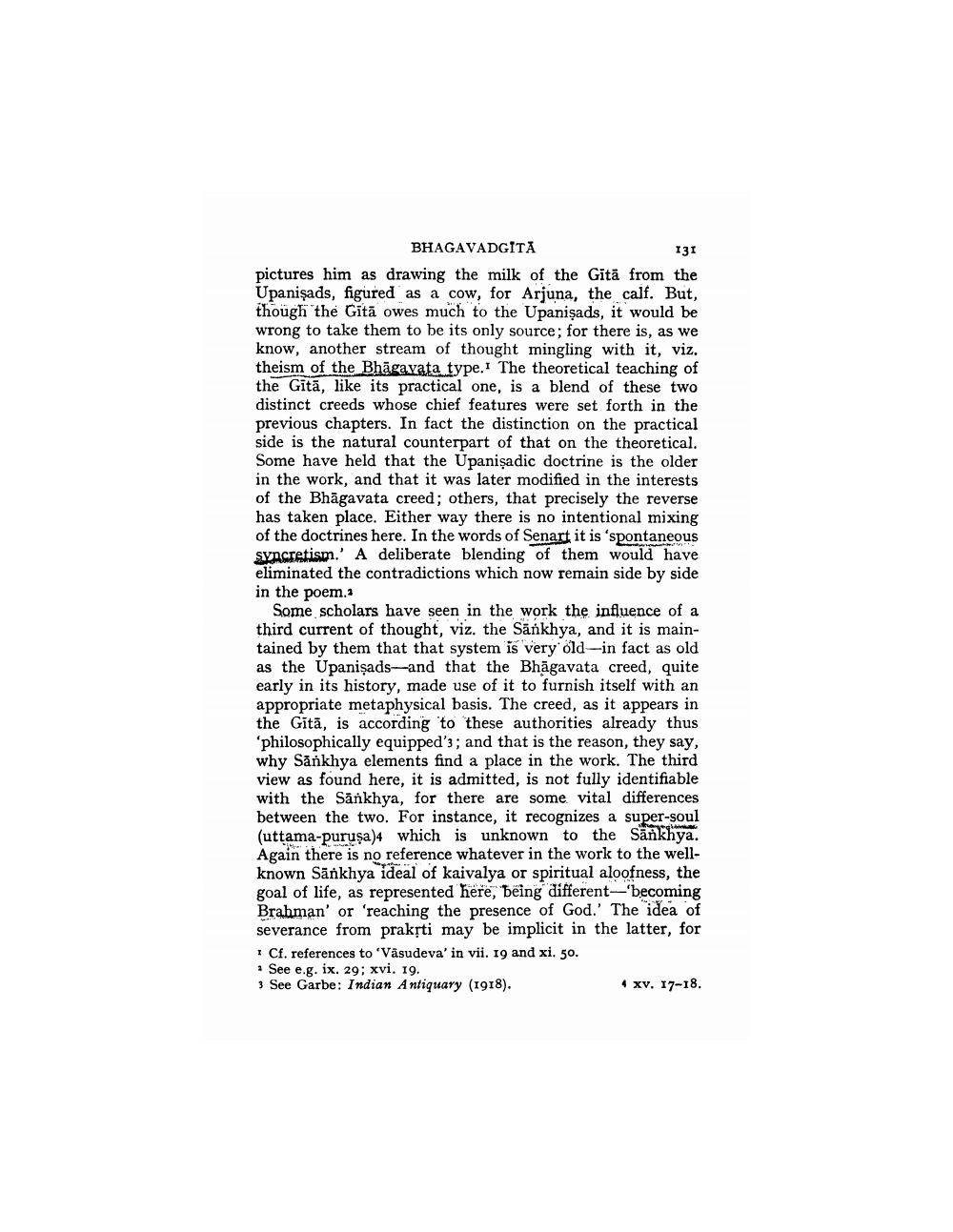________________
BHAGAVADGITA
131 pictures him as drawing the milk of the Gītā from the Upanişads, figured as a cow, for Arjuna, the calf. But, though the Gītā owes much to the Upanişads, it would be wrong to take them to be its only source; for there is, as we know, another stream of thought mingling with it, viz. theism of the Bhāgavata type. The theoretical teaching of the Gītā, like its practical one, is a blend of these two distinct creeds whose chief features were set forth in the previous chapters. In fact the distinction on the practical side is the natural counterpart of that on the theoretical. Some have held that the Upanişadic doctrine is the older in the work, and that it was later modified in the interests of the Bhāgavata creed; others, that precisely the reverse has taken place. Either way there is no intentional mixing of the doctrines here. In the words of Senart it is 'spontaneous syncretism.' A deliberate blending of them would have eliminated the contradictions which now remain side by side in the poema
Some scholars have seen in the work the influence of a third current of thought, viz. the Sānkhya, and it is maintained by them that that system is very old-in fact as old as the Upanişads-and that the Bhāgavata creed, quite early in its history, made use of it to furnish itself with an appropriate metaphysical basis. The creed, as it appears in the Gitā, is according to these authorities already thus 'philosophically equipped's, and that is the reason, they say, why Sănkhya elements find a place in the work. The third view as found here, it is admitted, is not fully identifiable with the Sankhya, for there are some vital differences between the two. For instance, it recognizes a super-soul (uttama-puruşa)4 which is unknown to the Sankhya. Again there is no reference whatever in the work to the wellknown Sānkhya ideal of kaivalya or spiritual aloofness, the goal of life, as represented here, being different-'becoming Brahman' or 'reaching the presence of God.' The idea of severance from praksti may be implicit in the latter, for * Cf. references to 'Vasudeva' in vii. 19 and xi. 50. . See e.g. ix. 29: xvi. 19. 3 See Garbe: Indian Antiquary (1918).
4 xv. 17-18.




